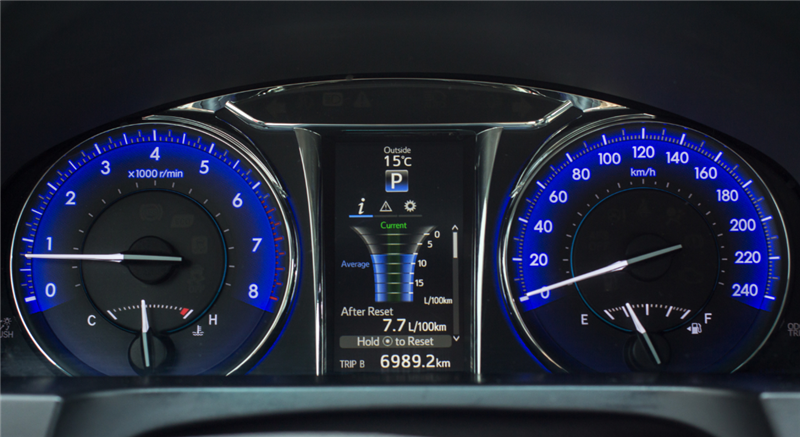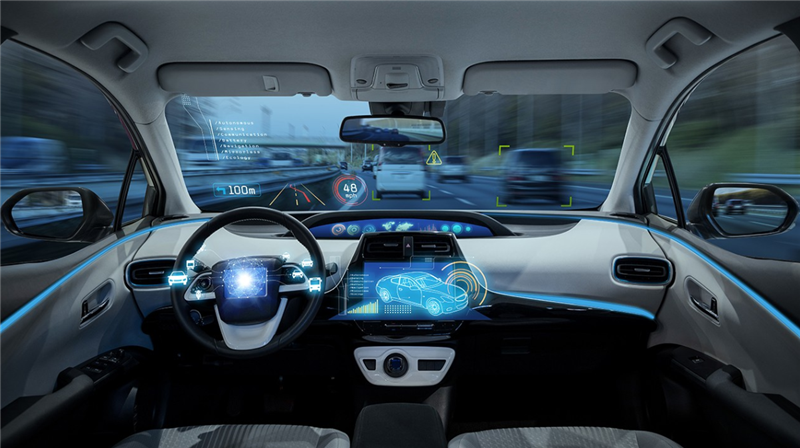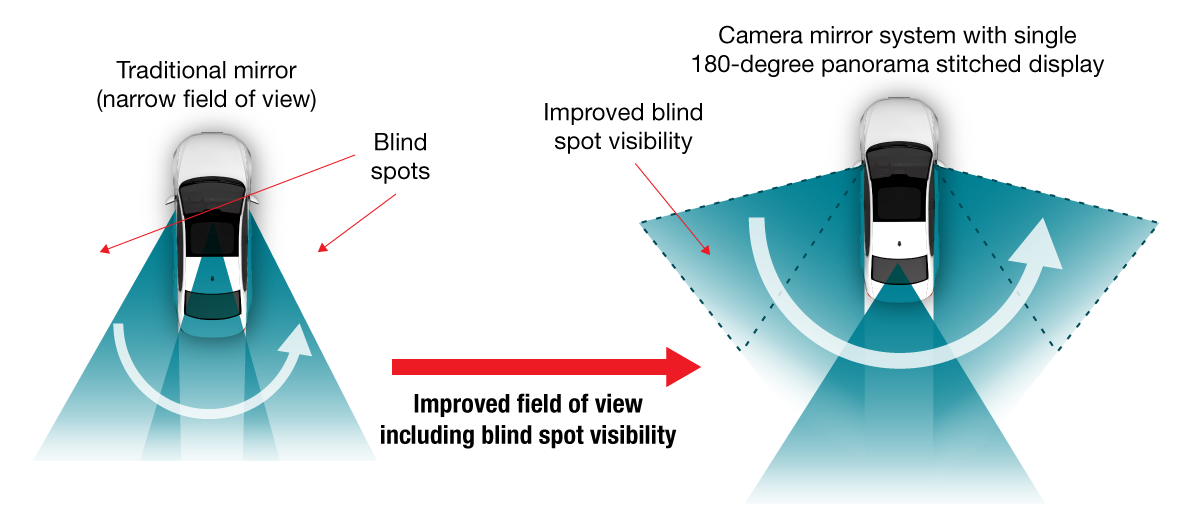SSZT424 august 2019
An automotive vehicle is a technology shaped by evolving customer needs. Over time, automakers have strived to meet these needs by introducing new designs and offering increased built-in functionality. In an effort to keep up with current consumer demands, automakers are heavily investing in advanced infotainment and cluster display features.
To accommodate the growing number of display features while preserving driver safety, automakers are introducing digital cockpits. Digital cockpits further the digitalization and variety of in-vehicle displays – along with personalization and interactivity embedded within – to keep drivers focused on the road.
The digitalization of displays
As its name implies, the digital cockpit aims to digitalize the entire cockpit in a connected car. It introduces digital displays in vehicles where none currently exist, such as driver notification gauges, sideview and rearview mirrors, and the knobs that set the audio volume. Moreover, the digital cockpit digitalizes displays that have traditionally been analog, such as instrument clusters.
Increasing the amount of digitalized visuals should substantially reduce the frequency of observational errors drivers make by making information easier to read. The hybrid instrument cluster shown in Figure 1 demonstrates the increased readability of digital text. Essentially, digitalization helps drivers make informed decisions faster than ever before.
 Figure 1 Hybrid instrument cluster
Figure 1 Hybrid instrument clusterDiversification in display mediums
The digital cockpit presents infotainment to drivers through a novel array of channels. In contrast to traditional in-vehicle display systems, which relied solely on analog screens and optical mirrors, the digital cockpit also uses projection lenses and camera mirrors to relay information to drivers. Figure 2 depicts how an augmented reality head-up display (AR HUD) takes advantage of projection lenses that enable drivers to consume driver-assistance data naturally, quickly and conveniently. Similarly, Figure 3 illustrates the role of mirror-replacement vision systems in delivering surround-view coverage. As a result of these innovations, automakers can position relevant and important information directly in the driver’s line of sight and expand their field of view.
 Figure 2 AR HUD
Figure 2 AR HUD Figure 3 Mirror-replacement vision system
Figure 3 Mirror-replacement vision systemDisplay personalization
By leveraging the flexibility of digital hardware, original equipment manufacturers (OEMs) are aiming to make driving a more personalized experience. In the digital cockpit, drivers can customize the information presented in each display based on their preference. In this way, the digital cockpit allows drivers to situate various types of infotainment according to their importance and utility.
Enhanced display interactivity
As vehicles gain more display features, the digital cockpit is geared to enhance the interaction between humans and cars. Given the pervasive use of touch-screen displays in consumer electronics, it should come as no surprise that the next generation of car displays is transitioning to touch-screens as well. Moreover, with the advent of artificial intelligence, the digital cockpit promises to support advanced infotainment display features such as gesture and voice control. These display features enable seamless interaction between drivers and cars, and alleviate the amount of hand-eye concentration needed to operate the vehicle’s resources.
The Centralization of Infotainment Systems
As shown in the high-level block diagram in Figure 4, input data requires transport and processing before sinking into display technology. In order to support the feature-rich output channels comprising the digital cockpit, there is a substantial increase in onboard data consumption and data flow. Theoretically, that should require the installation of a greater number of processors and data transport links, making the system architecture more expensive, convoluted and at risk of failing.
 Figure 4 High-level block diagram of a digital cockpit
Figure 4 High-level block diagram of a digital cockpitTo avoid those drawbacks, OEMs are choosing to revamp the hardware infrastructure in favor of centralized in-vehicle infotainment platforms that minimize the costs, complexity and risk associated with system designs. Essentially, platform centralization minimizes the amount of intermediary components needed to connect each input source with each output channel. This requires ramping up the data-handling capabilities of each link and processor, which in turn enables the formation of new in-vehicle infotainment network architectures and topologies. To fulfill that need, TI supplies Jacinto™ processors and FPD-Link products.
The digital cockpit is a venture into automotive connectivity and innovation. It presents an opportunity for OEMs to fulfill consumer needs by incorporating modern technology. Fortunately, automakers can leverage advanced semiconductor chips to create centralized infotainment platforms, which overcome the technical and financial difficulties associated with the digital cockpit’s implementation.
Additional Resources
- To learn more about our FPD-Link solutions, visit the FPD-Link Learning Center.
- For a deeper look into the evolution of automotive instrument clusters, read the technical article, “Moving the needle on automotive clusters.”
- To better understand the role of TI’s processors in the digital cockpit, check out the short article, “Jacinto DRA automotive processors drive digital cockpit solutions.”